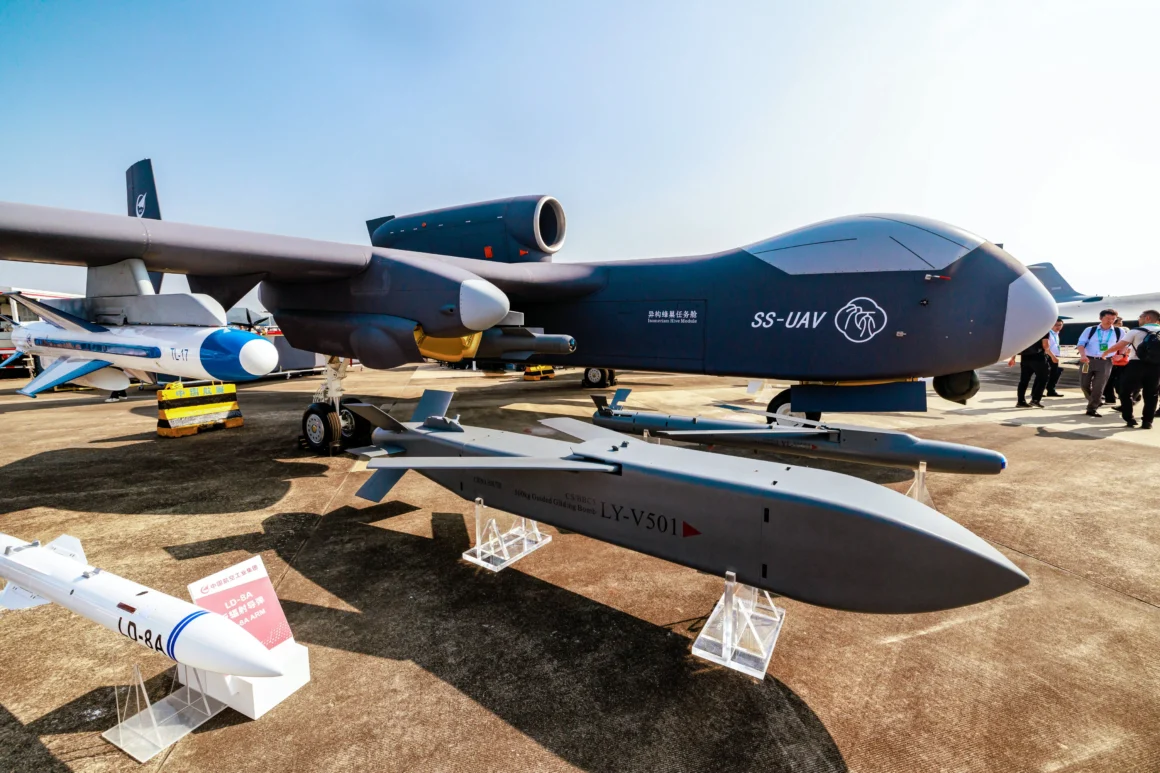If there’s one thing the world has learned over the past decade, it’s that drone warfare is no longer science fiction—it’s real, evolving, and changing how nations fight. Now, China is pushing the boundaries even further with the upcoming test flight of its Jiutian SS-UAV (Jiutian Drone Warfare). And trust me, this isn’t your average drone.
Picture a flying command centre, soaring at 15,000 metres with a wingspan of 25 metres. This beast can carry over 100 small drones or 1,000 kilograms of missiles. With a range of 7,000 kilometres, the Jiutian can practically reach from Beijing to parts of the Indo-Pacific in a single flight. That’s Jiutian drone warfare, redefining what we thought was possible.
China calls this a defensive tool, meant to protect its interests. But when your drone can launch swarms of smaller drones, coordinated by artificial intelligence, and fly where most air defence systems can’t even reach, it’s hard not to see this as a game-changer. The Jiutian drone warfare capability could disrupt regional balances, especially in sensitive areas like Taiwan or the South China Sea.
For Pakistan, the Jiutian presents a complex picture. Our close defence partnership with China means we could benefit from cutting-edge aerospace technology. Imagine the opportunities for local industries and innovation. Yet, the reality is that this new wave of drone warfare could stir tensions in South Asia, making regional security a tougher puzzle to solve.
Now, I’m not here to blindly praise every claim about the Jiutian. China’s track record shows that big promises sometimes run into technical glitches. Coordinating a swarm of drones at such heights, while maintaining communication under electronic interference, is incredibly difficult. And let’s not forget—the world’s major powers, including the US, are racing to develop counter-drone tech that could blunt the Jiutian’s edge.
But the story doesn’t end with hardware. The rise of Jiutian drone warfare also forces us to wrestle with ethical questions. Who’s responsible when AI systems make split-second combat decisions? How do we regulate machines that can strike with minimal human oversight? The international community hasn’t yet figured this out, and it’s a conversation that needs urgent attention.
As the Jiutian prepares for its first flight, it’s a clear signal: warfare is evolving faster than ever. The skies won’t just be battlefields for jets and missiles anymore—they’ll be arenas for autonomous swarms controlled by AI. This shift means Pakistan and the region must balance embracing innovation with pushing for stability.
At the end of the day, the true impact of Jiutian drone warfare will only become clear with time—after rigorous testing, real-world deployments, and how well it integrates into China’s broader military strategy. Until then, it remains both a symbol of ambition and a reminder of the challenges ahead.
So, what do you think? Is the Jiutian the future of combat, or just another high-tech experiment? One thing is certain: drone warfare is here to stay, and its next chapter is unfolding right now.


Leave a Reply